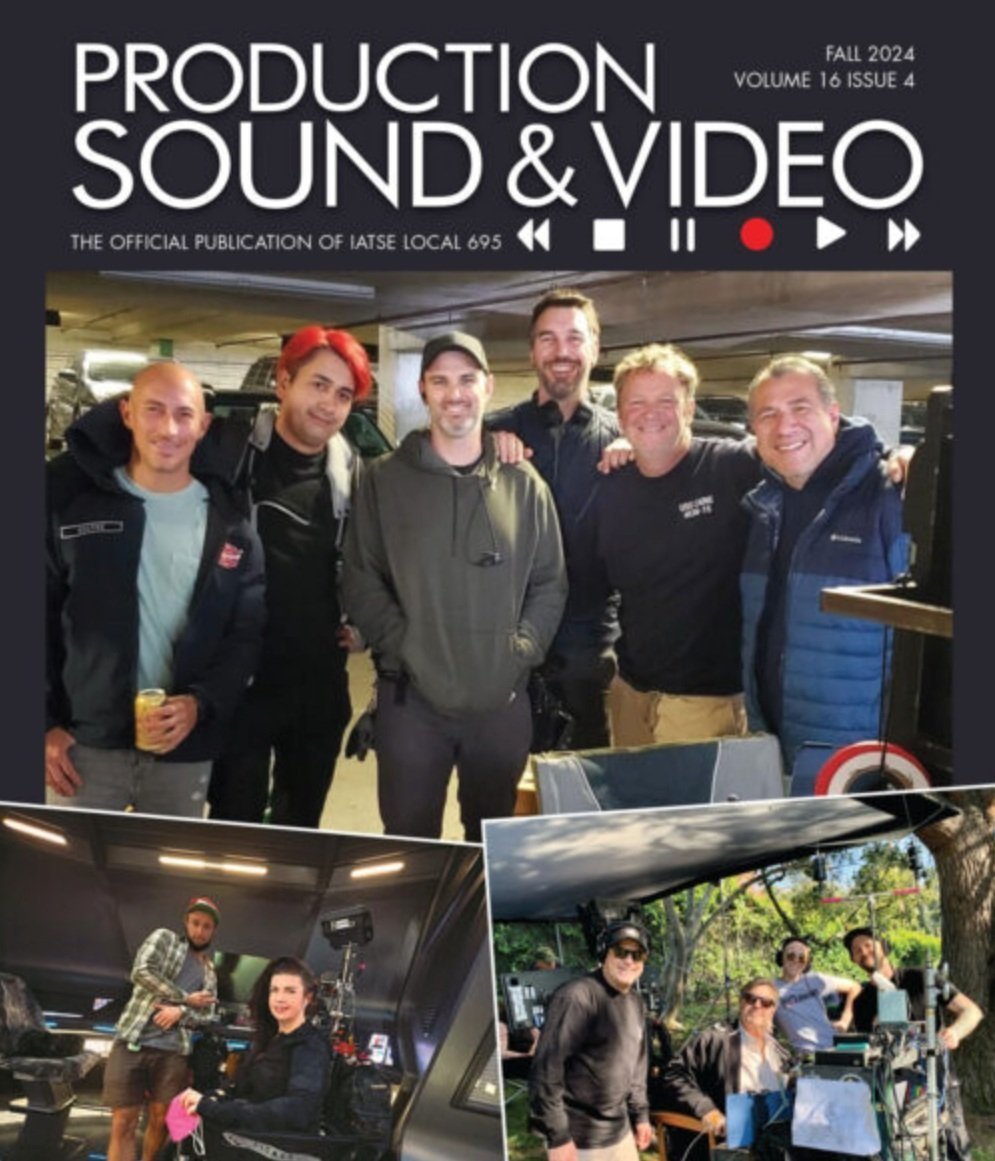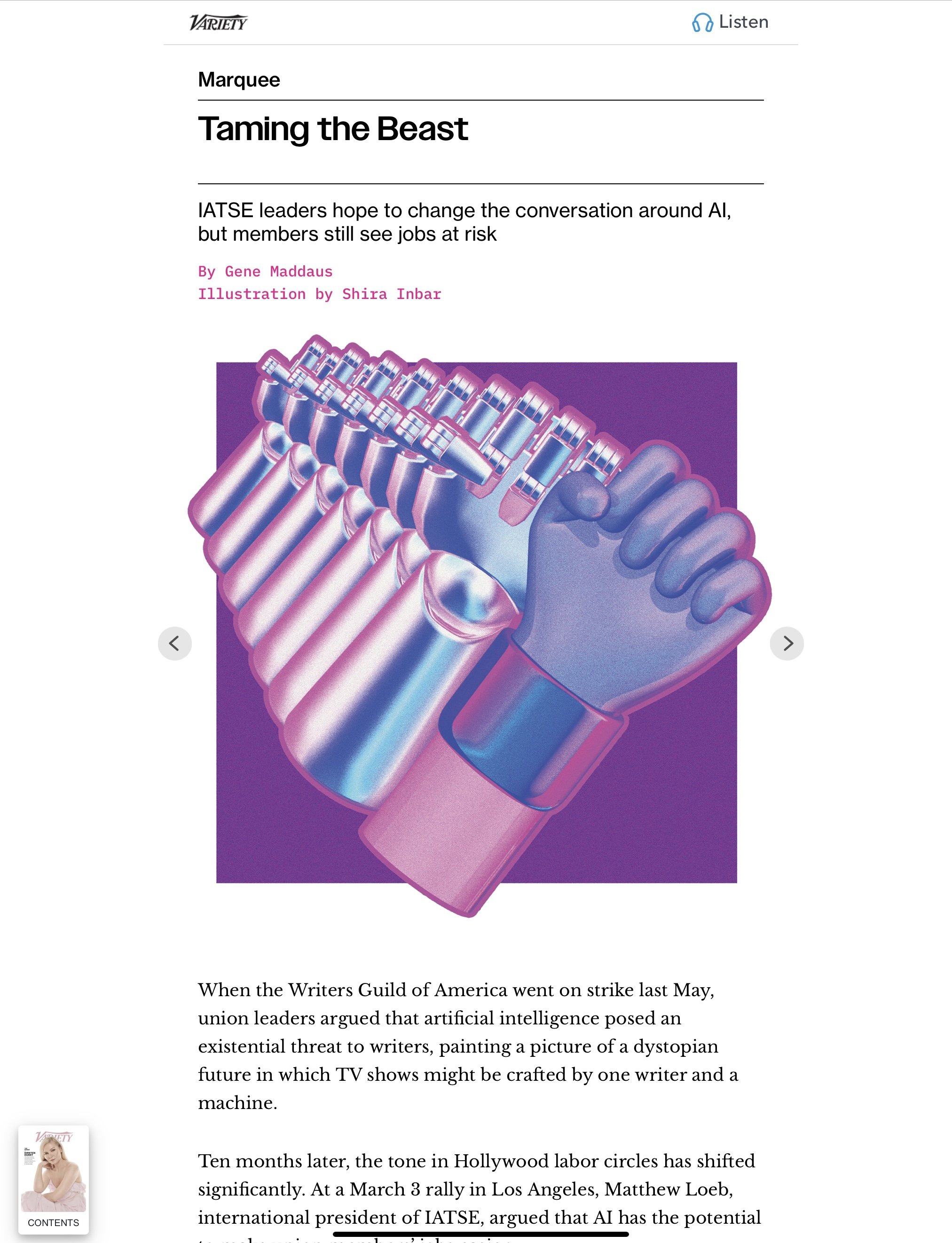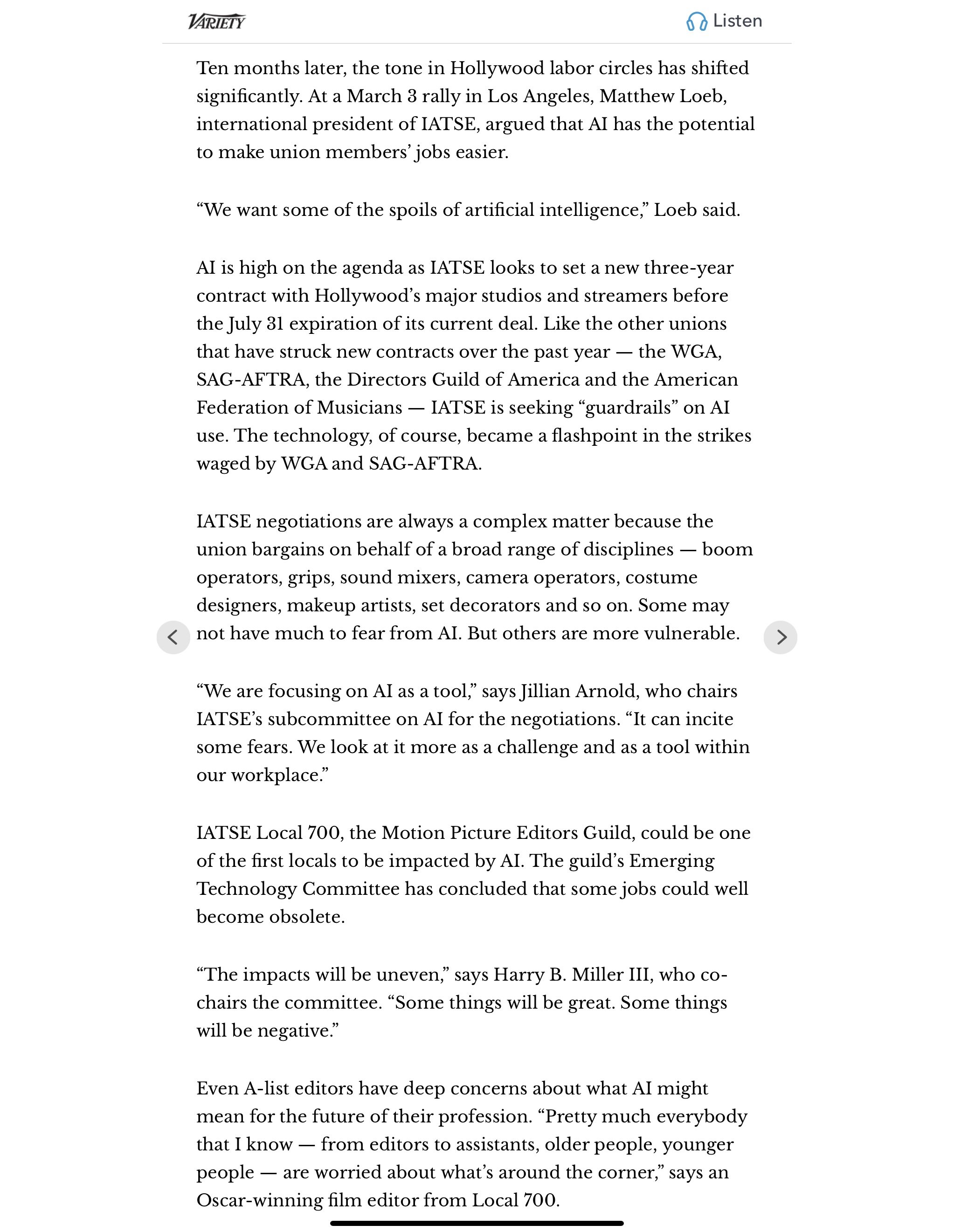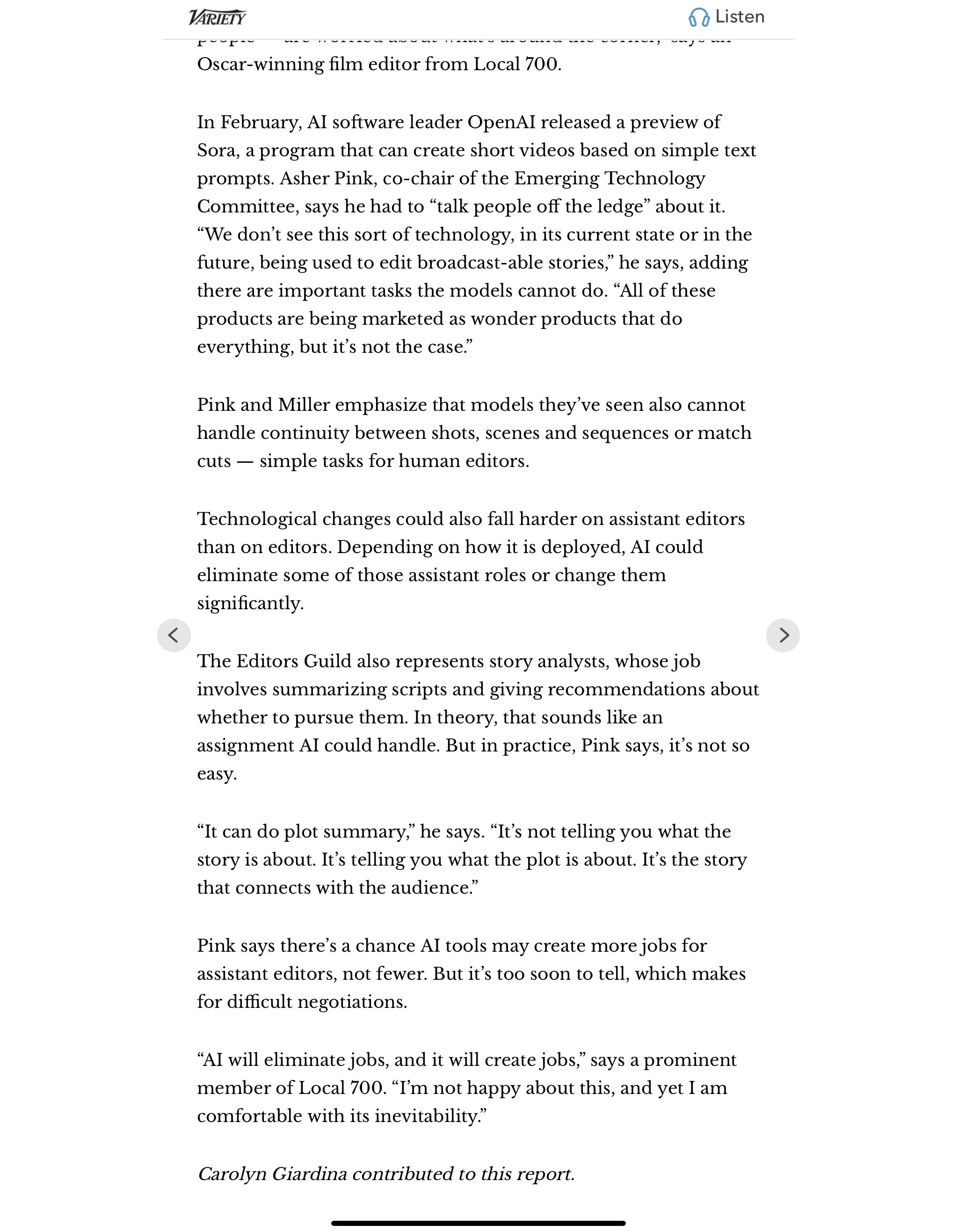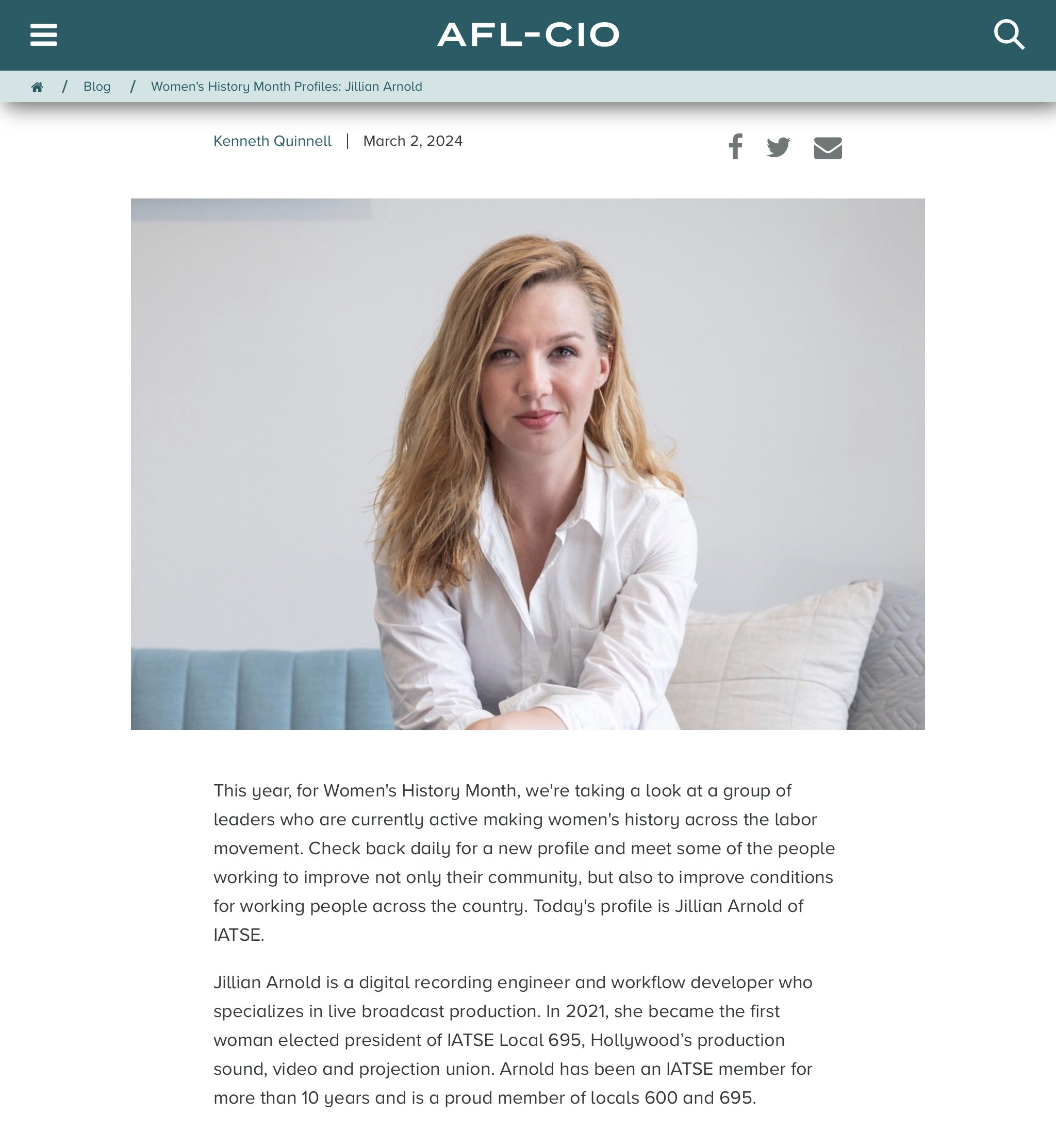
Case studies: AI and worker representation
Jillian Arnold, President of IATSE Local 695, emphasized that communication over technology between the union and employers is critical. In addition to regular consultations with employers, IATSE is launching a training and upskilling programme in relation to new technologies.
Local 695 Magazine: Winter 2024
Let’s talk about Lee Smith.
Congratulations to the 2024 World Series Champions: The Los Angeles Dodgers. What a fun and exciting series to watch!
A further congratulations goes to all the crew who make baseball and any sport a reality for our viewers. The days are long, the turnarounds can be a grind, and I know from personal experience that crew support is not as verbalized as it should be. Thank you for your hard work.
To all of you who are New York Yankee fans out there … Well … as we say in Chicago, there’s always next year.
If we’re being honest, the Dodgers are not my team. I was rooting for them, but I’m a Chicago fan through and through. It’s something that I inherited from my grandmother. She moved from South Dakota to the big city because of the Chicago Cubs. To this day, there are certain players we don’t mention in front of Grandpa and my mother used to tell me stories about when dinner was usually burned when the Cubs lost. Grandma’s a woman after my own heart.
One of my favorite players, Lee Smith, was drafted in 1975. He was described as an intimidating figure on the pitcher’s mound, standing at six feet, six inches, with a ninety-five mile-per-hour fastball.
He holds the current Cubs’ team record for career saves with one hundred eighty. Smith was never inducted into the Hall of Fame, despite being one of the best closing pitchers in MLB history—a fact which has puzzled some baseball historians. However, despite Smith being one “of the best one-inning pitchers the game has ever seen,” my respect for this man was earned on his exit from the bullpen.
Local 695 Magazine: Stream Team
Communication has changed drastically in recent years. Though the internet age had already seen an acceleration in this field, the COVID-19 pandemic forced an exponential leap forward as social distancing requirements and remote contact became necessary parts of day-to-day life. Though life has more or less returned to normal following the pandemic, many of the innovations that resulted from it have remained. Video conferencing, event streaming, and distant participation are all here to stay. That is where groups like the Local 695 Stream Team have made their mark, continuing to innovate on developments brought about by lockdown.
When the pandemic hit, labor unions across the country had just as much of a responsibility to regularly meet with their members and keep them informed despite distancing requirements. Though not unheard of beforehand, remote membership meetings went from being more of a novelty to an absolute necessity. Local 695 hosted its first remote membership meeting in the spring of 2020 and, like most at the time, took advantage of the Zoom video conferencing platform to do it. This worked well, but as the pandemic gradually lessened and normal in-person events resumed, there was a desire to “return to normal.” Many felt that the social and community aspects of General Membership Meetings had been lost in a remote environment. At the same time, remote meetings had increased accessibility for many members. Attendance had increased dramatically since their implementation. Thus, a hybrid format meeting—where members could attend either in person or via a remote platform—was necessary.
Local 695 Magazine: Fall 2024
Let’s talk about Zarya of the Dawn.
As I write this, I’m currently en route to work as the Recordist for The Daily Show’s coverage of the Republican National Convention (RNC) in Milwaukee. In August, I’ll fly home to Chicago to work the Democratic National Convention. These events have been a career bucket list item for as long as I can remember. Though I was supposed to check them off my list in 2020, the COVID-19 pandemic forced me to postpone endeavors until now. But this year’s election seems to hit a little closer to home. For the past year, I have poured my heart and soul into my research on artificial intelligence (AI) for this year’s Basic and Videotape Supplemental Agreement negotiations. A large part of that research revolved around copyright laws and how they pertain to our industry.
According to the U.S. Copyright Office, AI or generative AI, models “train” on vast quantities of unstructured, preexisting human-authored data. A human “prompts” or creates a text instruction, which is converted into tokens that the AI model uses to find patterns within that data set to draw from. The machine then uses those inferences from the trained data set to generate new content or output. This output can be text, audio, or visual in format.u have a creative project to share with the world. Whatever it is, the way you tell your story online can make all the difference.
The questions becomes who is the author of the output? The human who wrote the prompt or the AI model?
Local 695 Magazine: Summer 2024
Let’s Meet the Press…
When I was in high school, one of my first real paid jobs was as a student journalist in my city’s printed newspaper. My first article was above the fold, front page, in print. Yes, I have just dated myself, but I am proud of it. I was unofficially interning at the Chicago Tribune in the photo department and was editor-in-chief of my high school newspaper. I loved to research and get the story. It was one of my favorite high school activities. And I still write on steno pads, rather than legal. At the time, my goal was to go to school for journalism. My journalism career was side-swiped by a more glamorous and lucrative career in TV and film, but the lessons imposed on me in Mr. Venetucci’s junior and senior year broadcast TV class have never left my system.
I am and will always be a skeptic of the press.
Earlier this year, panic swept through our industry as OpenAI announced Sora—their text-to-video artificial intelligence (AI) program. Initial promos for the service were impressive, particularly if viewed on small displays such as those of a cellphone, tablet, or laptop. News then followed that OpenAI was attempting to court Hollywood studios with this new product and shortly after that, The Hollywood Reporter announced that producer and studio owner Tyler Perry would be halting construction on an $800 million expansion of his Atlanta-based studio because of his belief that Sora and similar AI tools would fundamentally change the way our industry functions. Perry called for guardrails to be placed on the use of AI, citing that it would be a job killer. Then in April, OpenAI released Air Head, a short film produced by ShyKids using Sora to demonstrate the capabilities of this new tool. All these stories paint a bleak picture for our business if taken at face value.




